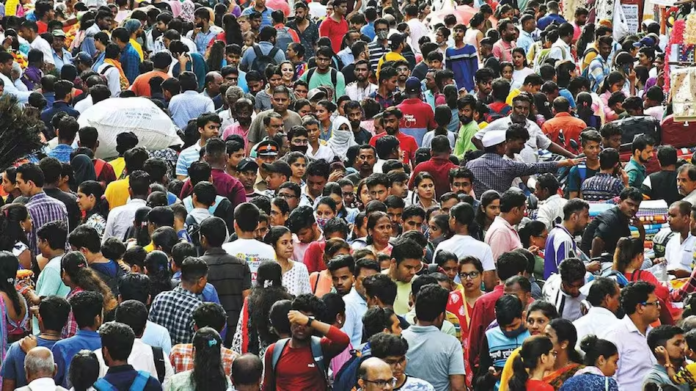UNFPA Report: India is still a country of youth. Most of the country’s population is young, but the situation may change a lot by 2050. Andrea Wojnar, head of the India unit of the United Nations Population Fund, UNFPA-India, has said that India’s elderly population is likely to double by 2050. There is a need to invest more in health care, housing and pension in the country, especially for those elderly women who are ‘more likely to be left alone and face poverty’.
Table of Contents
Wojnar, resident representative of UNFPA-India, in an interview with PTI a few days after World Population Day (July 11), outlined the major population trends that India is prioritizing to accelerate sustainable development. These include young population, old population, urbanization, migration and changes according to the climate. All these factors present unique challenges and opportunities for the country.
By 2050, there will be 34 crore people over 60 years of age
Wojnar said that the number of people aged 60 years or more is expected to double to 34 crore 60 lakh by 2050, so there is a dire need to increase investment in healthcare, housing and pension schemes. He said, “… This is especially necessary for older women, who are more likely to live alone and face poverty.” The ‘UNFPA-India’ chief said that India has a large youth population and there are 25 crore 20 lakh people in the age group of 10 to 19 years. He mentioned that by promoting gender equality as well as investing in health, education, job training and employment generation, this demographic potential can be capitalized and the country can be led towards sustainable progress.
Women living alone face special challenges…
Wojnar said, “India is projected to have 50 percent of its population in cities by 2050, so building smart cities, robust infrastructure and affordable housing is important to tackle slum growth, air pollution and environmental problems.
Urban plans should also take into account women’s safety needs, access to health care and education and jobs, so as to promote gender equality and improve the overall quality of life.” Wojnar also said that managing internal and external migration requires well-thought-out planning, skill development and distribution of economic opportunities.
He said that dealing with the special challenges faced by women living alone or migrant women due to their husbands moving to another place is important for balanced development.
“Some challenges still remain”
It is important for India to incorporate climate change adaptation into development plans and invest in renewable energy. “Climate change can affect fertility, making it harder to conceive, leading to pregnancy complications, and limiting access to health care during emergencies.
Addressing these issues is critical for gender equality and sustainable development,” Wojnar said. He said India is striving for more sustainable and equitable development by focusing on these trends. He said India was the first country to implement a national family planning program and has made great progress, but “some challenges still remain.”
Wojnar said, “According to the latest data of NFHS-5 (2019-21), 9.4 percent of family planning needs are unmet and 7.5 percent of cases are unplanned pregnancies.
This year’s ‘theme’ supports efforts to improve access to contraception and family planning resources, especially in areas where it is most needed.” The Ministry of Health and Family Welfare is making efforts to create awareness about “appropriate timing and spacing of pregnancies for the well-being of mother and child” based on the ‘theme’ of World Population Day this year as these are essential for the health of mother and child.
Experts have recommended a gap of at least 24 months between the birth of a child and a woman getting pregnant again. This reduces health risks and strengthens family bonds.

